Free download: Top 10 Natural & Easy Remedies for Joint Pain from Home. Learn these helpful remedies.
Estimated Reading Time: 7 minutes read
Are you struggling with elbow pain when trying to straighten your arm? This joint discomfort often arises from a variety of factors related to the elbow joint. In this guide, we’ll explore the reasons behind this pain and how you can effectively manage it at home, focusing mainly on beneficial exercises.
Elbow pain from straightening the arm can stem from daily activities, excessive strain, or specific health conditions. Early identification and proper management of these symptoms are crucial to prevent further issues. While this article offers practical advice, there are other options besides medical consultation, especially if the pain is severe or persistent.
Table of Contents
Causes of Elbow Pain When Straightening Your Arm
Elbow pain during the action of straightening the arm can be attributed to a variety of factors. It’s essential to understand these causes to address the issue effectively:
- Dislocated or Hyperextended Elbow: An elbow joint pushed out of alignment.
- Bone Fractures: Fractures in the bones surrounding the elbow.
- Tendon Inflammation: Overuse or injury leading to inflamed tendons.
- Ulnar Nerve Swelling: Swelling of this nerve can cause pain in the elbow.
- Arthritis: Degenerative joint conditions like osteoarthritis or rheumatoid arthritis.
- Overuse Injuries: Repetitive motion injuries from sports or occupational activities.
Symptoms Accompanying Elbow Pain
The following symptoms often accompany elbow pain when straightening the arm:
- Stiffness: Difficulty in moving the elbow joint freely.
- Swelling: Noticeable swelling around the elbow area.
- Redness and Warmth: The skin around the elbow may appear red and feel warm to the touch.
- Numbness or Tingling: Sensations of numbness or tingling, especially along the ulnar nerve pathway.
- Weakness: A feeling of weakness in the arm, affecting the ability to grip or lift objects.
Identifying these causes and symptoms is the first step toward effectively managing elbow pain. Proper diagnosis and treatment are crucial for recovery and prevention of further complications.
Immediate and Long-term Management
A: The RICE Method
The RICE method is an effective initial treatment for elbow pain. It involves:
- Rest: Reducing the use of the affected arm, especially in weight-bearing activities.
- Ice: Applying ice intermittently (20 minutes on, 20 minutes off) to alleviate swelling and pain.
- Compression: Using a bandage or support for stability.
- Elevation: Keeping the elbow raised to minimize swelling.
After applying the RICE method, it’s important to gently reintroduce movement and strength to the elbow, being careful not to exacerbate the pain.
B: Long-Term Care and Prevention
Proper long-term care and prevention are essential in managing elbow pain and preventing future issues. This includes:
- Wearing Elbow Braces: These provide support and stability during activities, reducing the risk of re-injury.
- Proper Warm-Up and Cool-Down Exercises: These routines prepare the muscles and joints for physical activity and aid in recovery afterward.
- Correct Activity Techniques: Using proper techniques can minimize stress on the elbow.
- Sufficient Rest Periods: Allowing adequate rest helps in the healing and recovery of the elbow joint.
Continuing these practices not only aids in the healing of the current injury but also plays a significant role in preventing future elbow problems. The use of elbow braces, for example, can be particularly beneficial in sports or jobs that put repetitive strain on the elbow.
Similarly, proper warm-up and cool-down routines ensure that the muscles and joints are well-prepared and recovered, which is crucial for their health and longevity. Adhering to these preventive measures can greatly reduce the risk of elbow injuries and ensure the joint remains healthy and functional.
8 Stretches and Exercises to Relieve Elbow Pain
A: Stretch Tight Muscles
Stretching exercises are crucial for maintaining flexibility and reducing tension in the muscles around the elbow, which can alleviate pain and improve mobility.
1. Wrist Flexion Stretch
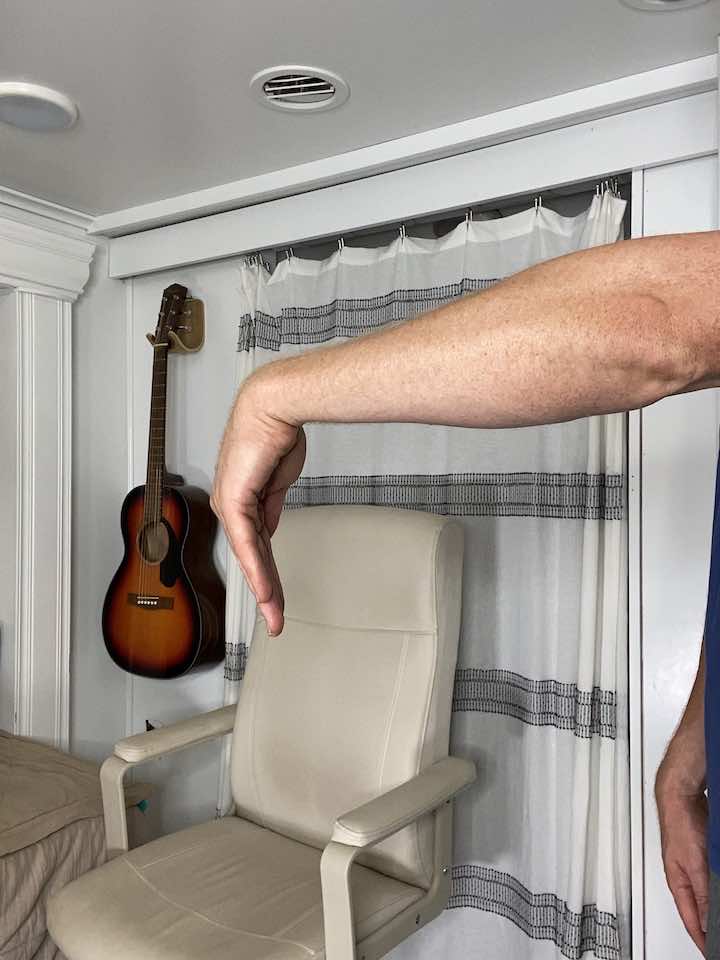
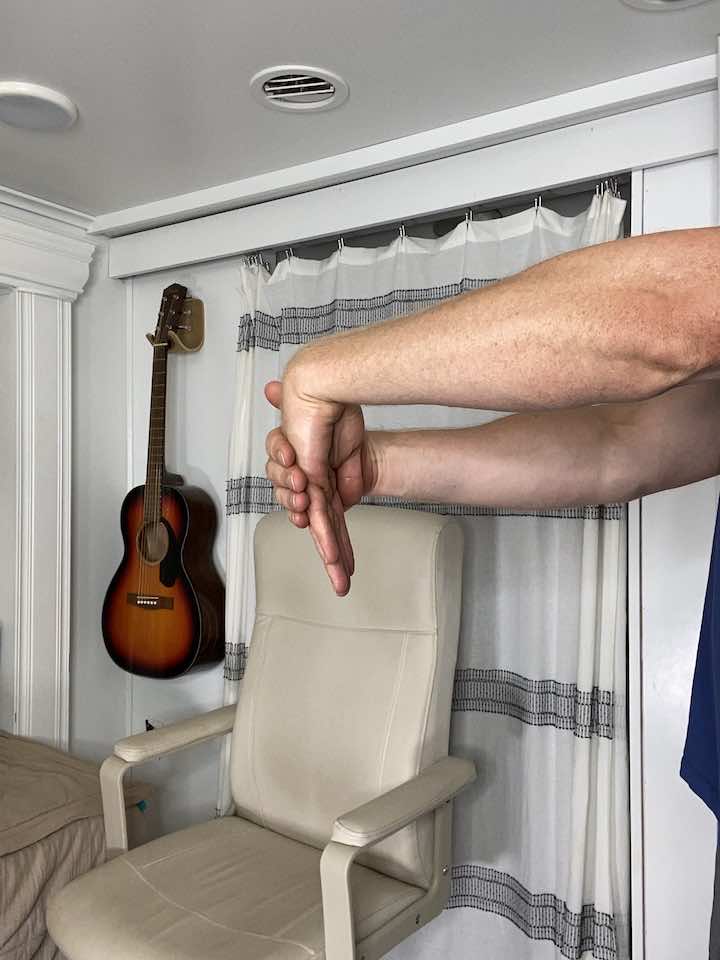
- Straighten your arm and bend your wrist forward as if signaling someone to “come.”
- Use your opposite hand to gently apply pressure across the back of your hand and pull it towards you until you feel a stretch on the top of your forearm.
- Hold for 30 seconds.
- Repeat 5 times, then move to the other arm.
2. Wrist Extension Stretch
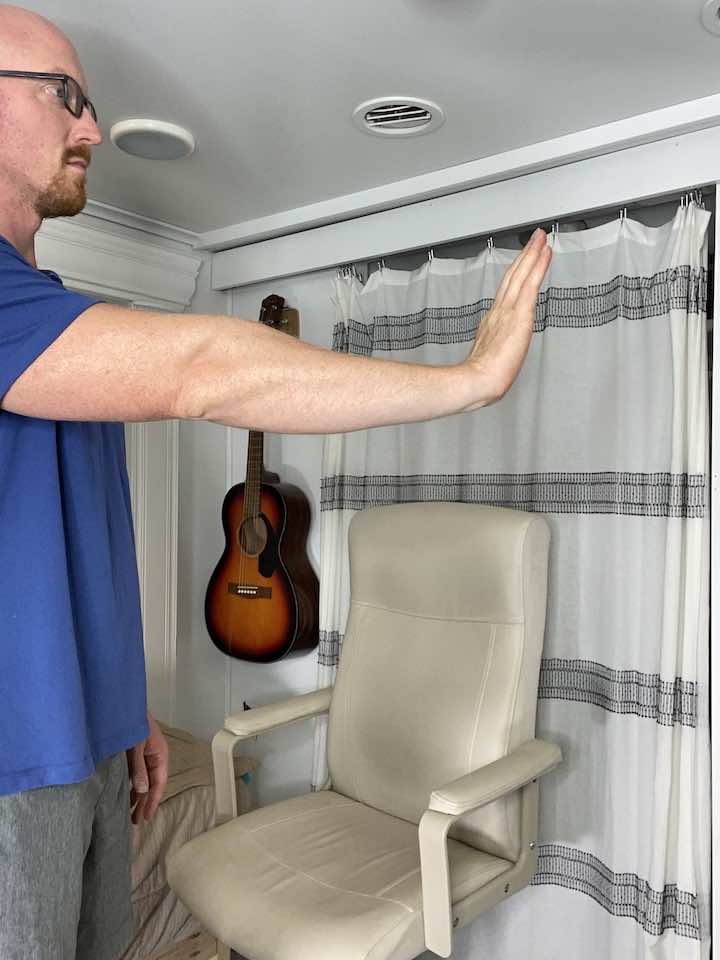
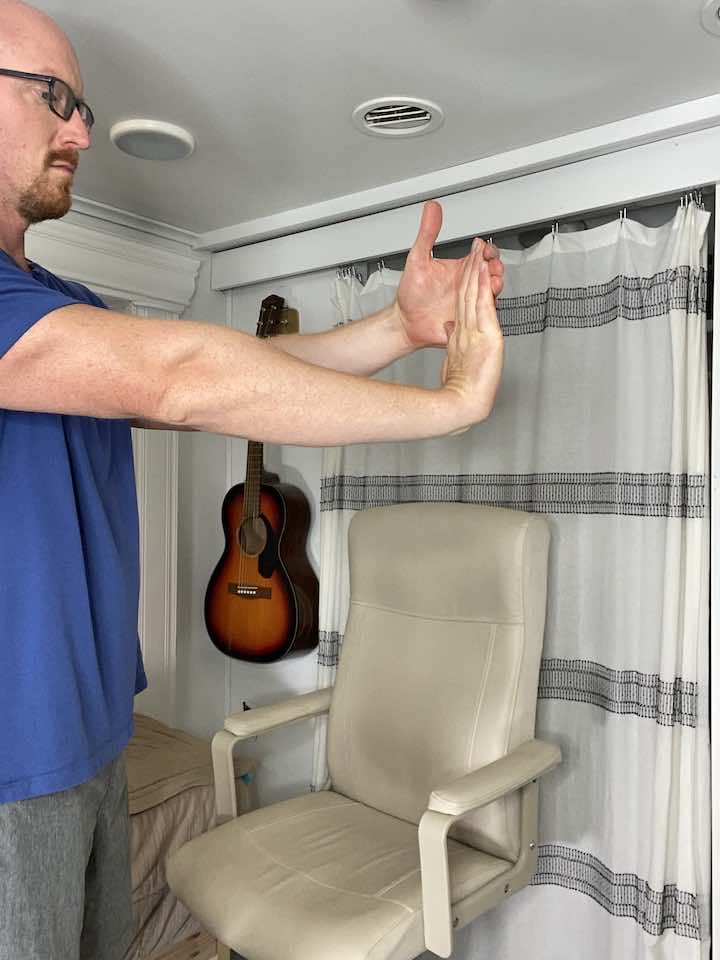
- Straighten your arm and bend your wrist as if signaling someone to “stop.”
- Use your opposite hand to gently apply pressure across the palm and pull it toward it until you feel a stretch inside your forearm.
- Hold for 30 seconds.
- Repeat 3 times, then move to the other arm.
3. Bicep Stretch


- Stand next to a wall, with your affected arm closest to it.
- Extend your arm behind you and place your palm flat against the wall.
- Slowly rotate your body away from the wall until you feel a gentle stretch in your bicep.
- Hold this position for 30 seconds.
- Release and repeat the stretch 2 more times for a total of 3 repetitions.
4. Ulnar Nerve Glides

Step 1: Your starting position will be holding your arm out to the side and gently bend the elbow. Make a circle with your thumb and index finger touching as if you’re saying you’re “A-okay.” Your palm should be facing out to the side, away from you.
Step 2: Begin to move the hand towards your head while extending the wrist back towards you. Make sure to keep your “A-okay” sign. The fingers should now be pointing towards you with the palm facing the ceiling.


Step 3: From here, bend the neck so that your head moves away from the working arm.
Step 4: To add an extra stretch to the nerve, slightly lift your bent elbow up towards the ceiling.

B: Strengthening Exercises
Following stretching, it’s essential to focus on strengthening exercises. These exercises build muscle support around the elbow, which is essential for preventing future injuries and managing existing pain.
1. Rows with Resistance Band
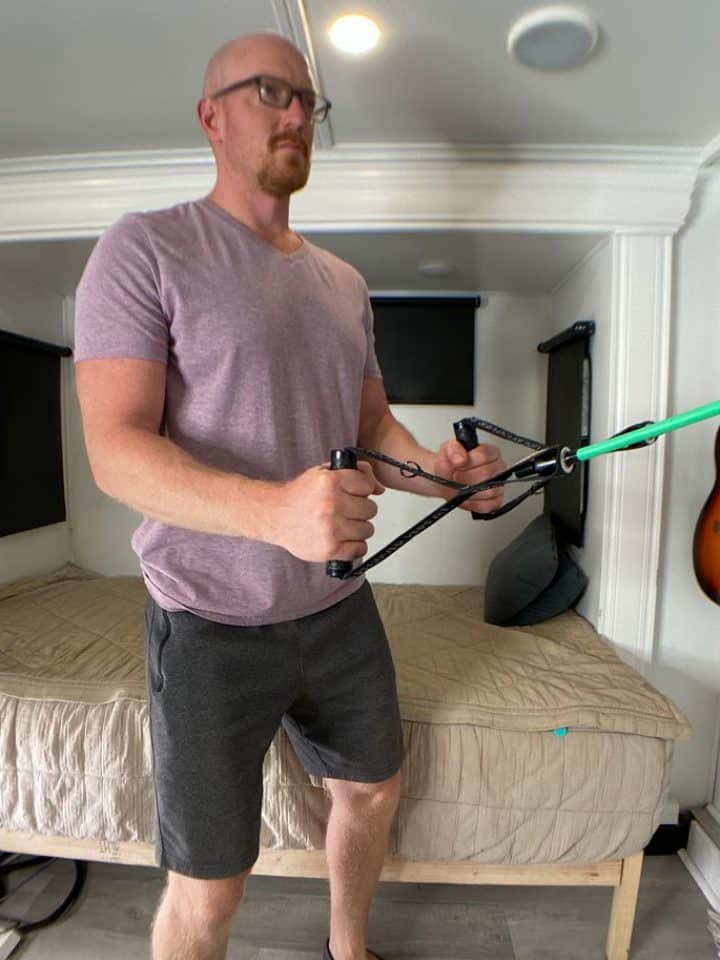
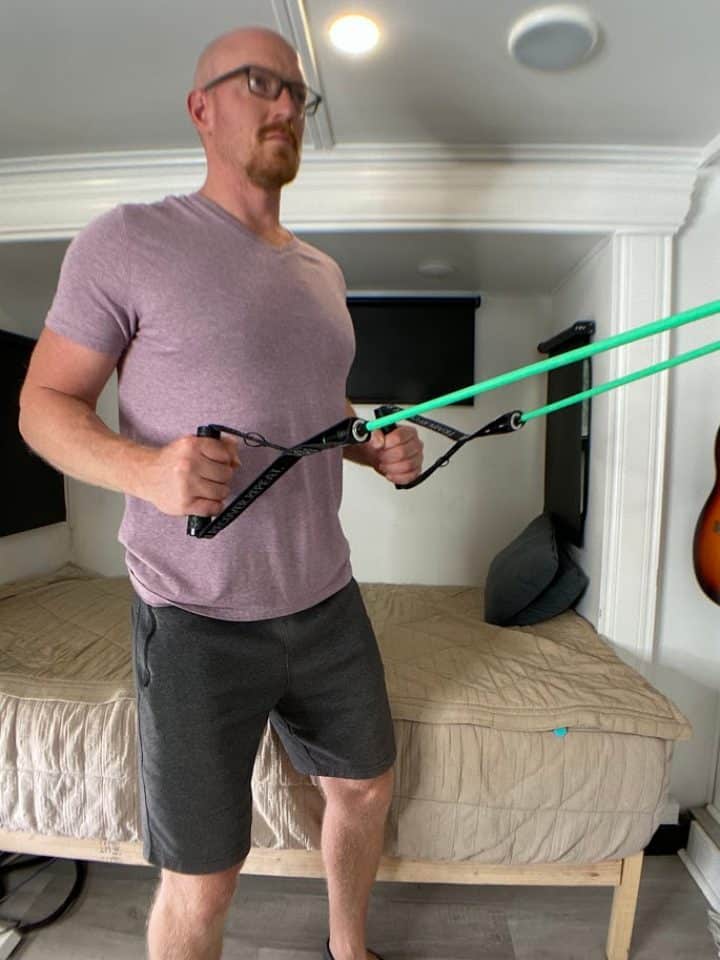
- Hold on to the ends of a resistance band (light, medium or heavy), which you can attach to a door knob.
- Begin with the arms elevated in front of you to shoulder height and the palms facing each other.
- Step back far enough that the resistance bend has a little tension.
- Pull back on the band by bending the elbows and swinging the arms back next to you. Make sure to squeeze the shoulder blades together.
- Hold for 2 seconds, then return to your starting position.
- Repeat 10 repetitions for 3 sets.
2. Pull Downs with Resistance Band
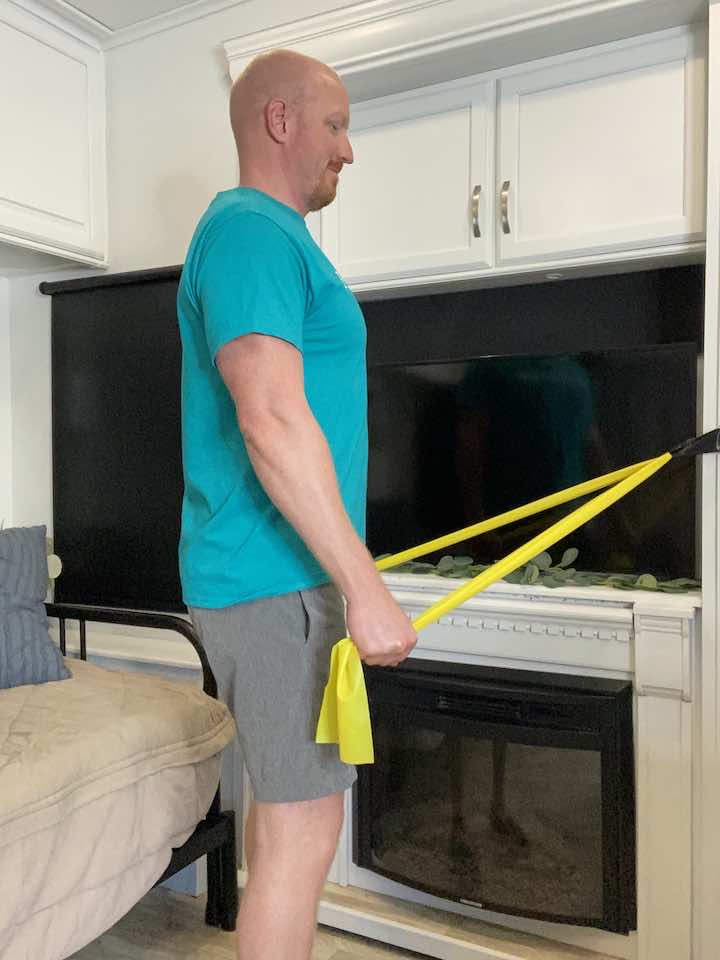

- Securely attach the resistance band to a high anchor point, such as a pull-up bar or a sturdy doorframe.
- Hold the band with both hands, palms facing forward and hands shoulder-width apart.
- Stand facing the anchor point with your arms extended upwards and your hands positioned above your head.
- Keeping your elbows straight, pull the band down towards your chest while squeezing your shoulder blades together.
- Pause at the bottom of the movement and then slowly return to the starting position.
- Repeat for 10 repetitions and aim for 3 sets.
3. Bicep Curls with Resistance Band

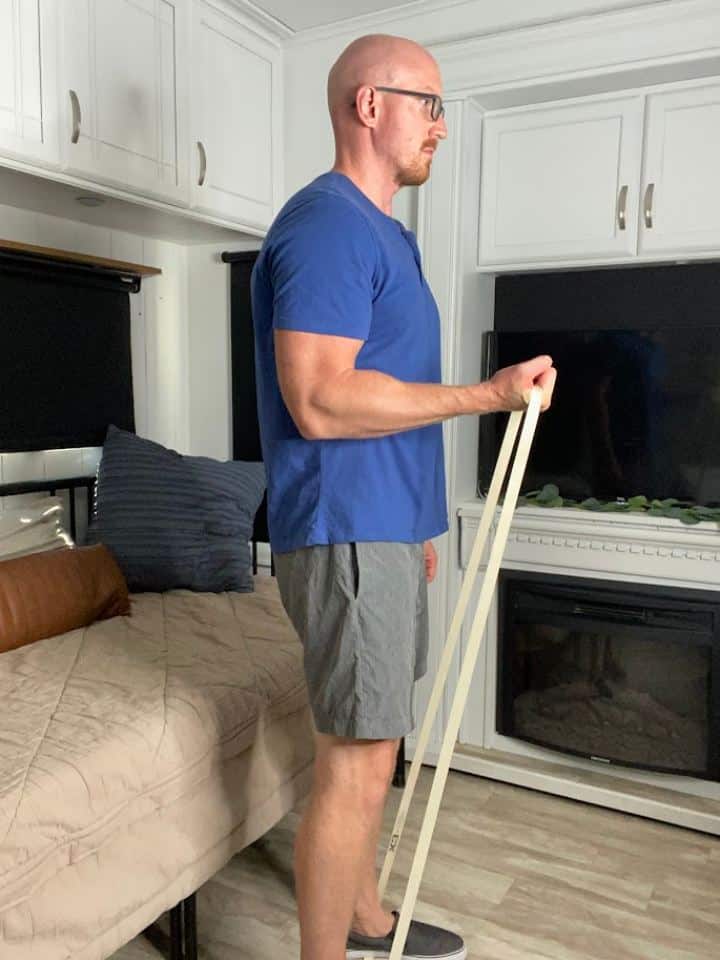
- Stand with both your feet in the middle of the resistance band, holding one end of the band in one hand.
- Keep your arms straight and by your sides, with your palms facing forward.
- Slowly bend your elbow, bringing your hands towards your shoulders while keeping your elbows close to your sides.
- Hold a moment, then slowly straighten your arms to return to the starting position.
- Repeat the movement for 10 repetitions, then switch to the other arm.
- Aim for 3 sets of this exercise.
4. Tricep Extension with Resistance Band
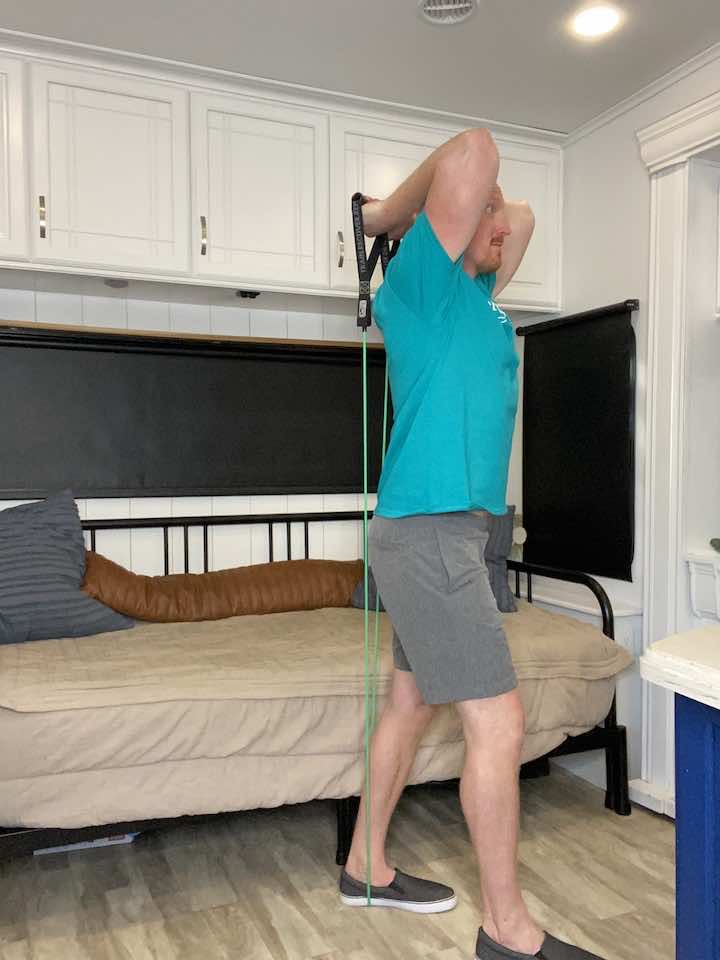
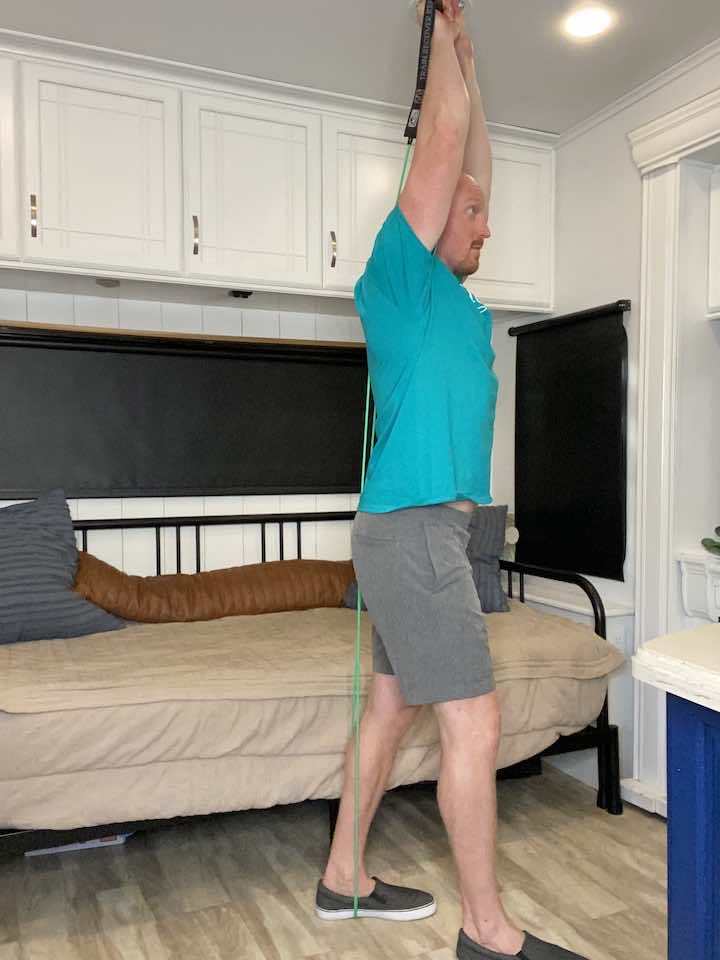
- Stand in the middle of the band with one foot, holding the other end of the band with both hands.
- Extend your arms straight up above your head.
- Lower the band behind your head, bending at the elbow and keeping your elbows pointing forward.
- Extend your arms back up, straightening your elbows.
- Repeat the movement for 10 repetitions, then switch to the other arm.
- Aim for 3 sets of this exercise.
Strengthening exercises not only aid in recovery but also play a preventive role by reinforcing the muscles and tendons around the elbow joint.
Conclusion
Understanding the causes and implementing a routine of targeted exercises can significantly help in managing elbow pain when straightening the arm. Remember to perform these exercises within a comfortable range and consult a healthcare professional if the pain does not improve or worsens. Proper care of your elbows is critical to maintaining their health and functionality.












